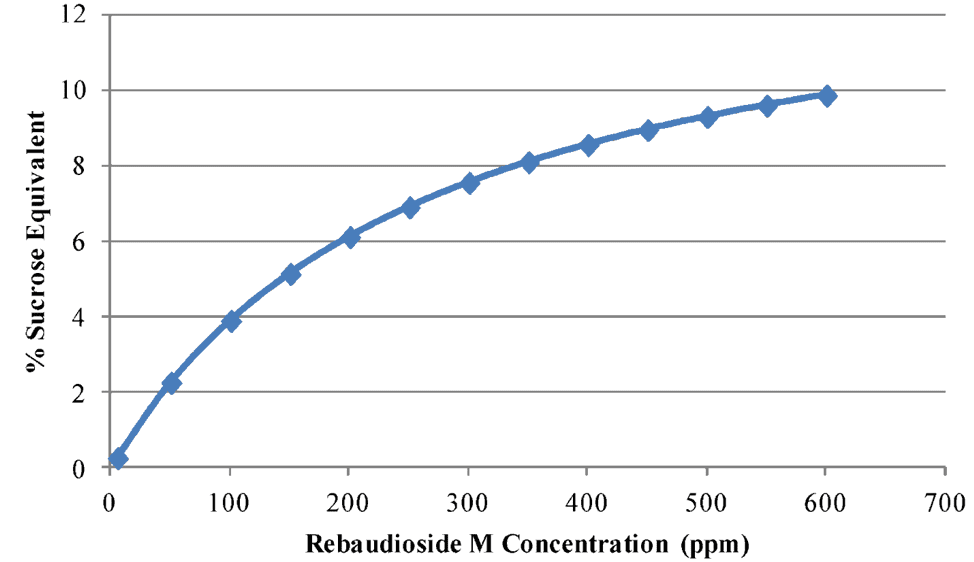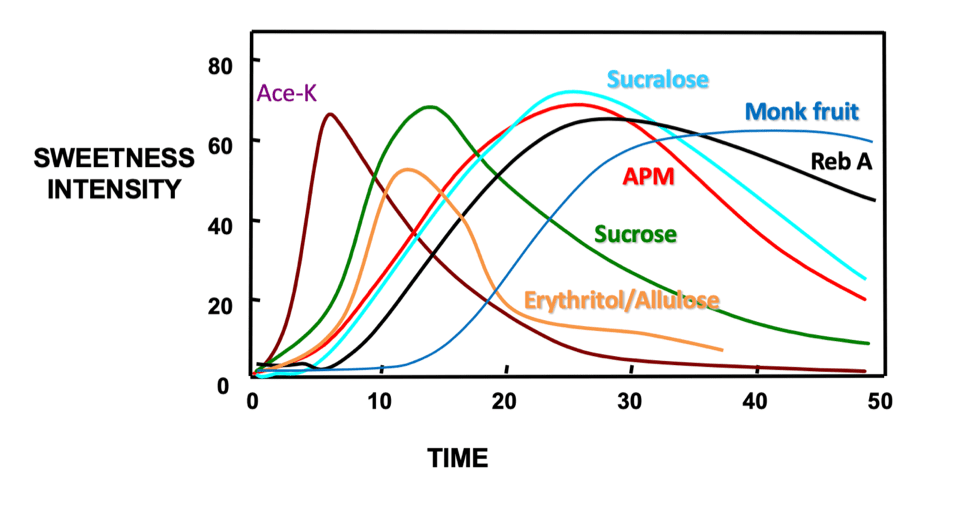Did you know that what we conventionally call “stevia” actually describes a family of 100+ glycosides that can be naturally extracted from the stevia leaf, each of which have their own unique properties and profiles? This breadth of variety with stevia is what can present challenges when it is used in formulation compared to more traditional sugar substitutes such as sucralose and aspartame. To help address these challenges and break down some of the complexities of formulating with stevia, we’ve compiled this starter’s guide for using stevia in beverage (and various other) product applications. This guide will focus on development of a thin beverage, the suggested usage levels for different stevia types, and how to choose the best stevia for such beverages (Note: As we’ll explain later, with thicker beverages, the max use levels for stevia will typically be higher).
What are the Maximum Usage Levels of Different Types of Stevia Types?
The chart below is a summary of maximum use levels for several stevia types, including our proprietary SoPure™ Stevia blends. These estimates allow for some minimally acceptable off-notes in taste, but this will vary based on the application and other ingredient interactions. For additional reference, an approximate sucrose equivalent value is provided for each type.
| Stevia Type | Estimated Maximum Usage in Water | Approximate Sucrose Equivalence (%) |
| Reb A 60 | 225ppm | 4.5 |
| Reb A 80 | 250ppm | 5.2 |
| Reb A 97 | 325ppm | 6-7 |
| Reb A 98 | 360ppm | 6.5-7.5 |
| Andromeda | 400ppm | 7-8 |
| Crest V | 600ppm | 9 |
| Plus | 175ppm (as natural flavor) | 2.4 |
In addition to the stevia types listed above, SoPure™ Pegasus, Pinnacle, Reb D, and Reb M are a few premium varieties which do not have many off-notes and can be used at levels exceeding 600ppm. For guidance on the sucrose equivalence for these particular varieties, reference the graph below that illustrates Reb M’s estimated sucrose equivalency by usage level (ppm).
Approximate Sucrose Equivalence of Reb M by Usage Level

How to Choose the Right Reb A
These days, Reb A is the most widely used type of stevia due to its pleasant sweetness and more economical cost. When formulating, it’s worth considering higher purity Reb A’s as they exhibit more sweetness and a cleaner taste compared to lower purity grades. As an example, if your product is currently using Reb A 50 or 60, you may consider switching to Reb A 97 or 98. Although the higher purity may cost more, this is offset because the higher grades have higher sweetness levels and thereby require lower use levels and concentrations. In effect, there is little, if any cost-in-use increase and as a bonus, the higher purity grades may result in a slightly cleaner taste.
Formulating For Smoothies, Jams, and Cookies
A thicker product such as a smoothie may be able to use Reb A 80 at 300ppm or more. The thickness of the drink affects how much and how fast stevia molecules get to the sweetness and bitter receptors on the tongue. The thicker the product, the longer it takes for the stevia to reach the receptors and if it does not get to the receptors before being swallowed, it’s possible not to taste any bitterness at all. A fruit jam may be able to use double the thin beverage use level and a dry application like a cookie may be able to use up to three times the thin beverage level.
Cost Efficiency in Formulation: Maximize Use of Low-Cost Reb A
In order to optimize cost-in-use of stevia for your product application, we recommend starting with determining the maximum use level of Reb A (keeping in mind that the stevia types that offer the best value for quality are likely Reb A 98 or Andromeda). For example, you might begin with 400ppm of Andromeda to get about 7 sucrose equivalents, and then decide you’d like a little more sweetness in the product and add 100ppm of Pinnacle to achieve your desired sweetness level. On the other hand, you could simply use approximately 450ppm of Pinnacle to get a similar product, but you’d be paying more for premium stevia. By starting the development process with Reb A, you can maximize use of the lower-cost stevias but still achieve desired quality and sweetness.
Other Factors: Solubility, Stability in High Temperatures, Shelf Life
In addition to all the variables already described, there are still other factors that should be considered when choosing the right types of stevia to use in formulation. In some cases, processing requires the stevia to be batched in concentrated form. For these scenarios, the solubility of the stevia should be measured. Reb A 80 and lower purities have a significantly higher solubility and should be considered for these types of applications, whereas Reb D doesn’t have a high solubility so should be avoided in concentrates. Another consideration is temperature. Will you be baking your cookie above 284° F? If so, you may not want to use Reb M as it becomes less stable above that temperature. When it comes to the shelf life of the product, stevia is more stable in ready-to-drink beverages when the pH is above 3. If your application is ready-to-drink and the pH is close to 3 or below, it would be prudent to monitor shelf life in real life conditions as the sweetness may degrade slightly over time. Our research has shown that accelerated conditions don’t truly replicate actual conditions but can provide some indication of stability. You may want to be proactive and include buffers in your formula to raise the pH level prior to a shelf life study.
Sugar Reduction vs. Complete Replacement
Stevia has a slightly later onset of sweetness than sugar and tastes sweet longer (reference the graph below that illustrates the sweetness intensity of different sweeteners over time). To best replicate the upfront sweet profile of sugar and HFCS, it is best to perform a sugar reduction. However, if a complete replacement is needed, we would recommend combining with another upfront sweetener like allulose or erythritol. If you’re interested in learning more about formulating stevia alongside acids, link to this post for deeper insights on this topic.

Our Formulation Experts Are Here to Help
Ready to create your own formula for success? For assistance with stevia in beverage formulations, please contact us for a consultation. Depending on your application, intended sucrose and stevia levels, labeling requirements, and budgeted cost, we can provide personalized recommendations.

